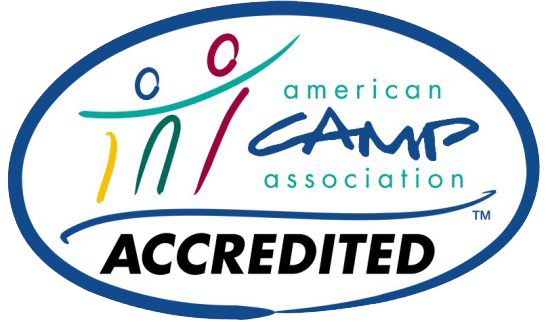Halloween is one of our favorite holidays here at Camps ‘R’ Us. We love it so much, in fact, that we sometimes celebrate it during the camp season too (Summerween). In collaboration with the American Academy of Pediatrics, and our Wellness Wednesday blog series, here are some important tips to consider to ensure your children have a healthy and safe Halloween.
Costumes
- Have your child wear costumes that are bright and fit properly. Make sure hats and masks do not impair eyesight. Consider adding reflective tape to costumes and trick or treat bags to enhance greater visibility
- Make sure that costumes are a short enough length to prevent tripping and shoes fit well
- Look for “flame resistant” on costume labels
- Consider non-toxic makeup and decorative hats as a safer alternative to masks. Test makeup on a small patch of your child’s skin to make certain your child does not have an allergic reaction
- Avoid any sharp or long swords, canes or sticks as a costume accessory. Sharp object may hurt your child if he or she stumbles or trips
- Do not use decorative contact lenses without an eye examination and a prescription from an eye care professional. Some contact lens companies make claims that “one size fits all” this is not true. Getting decorative contact lenses without a prescription may cause pain and serious eye disorders and infection
Pumpkins
- Never allow children to carve pumpkins. Instead, have children draw a face with marker and let adults do the carving.
- Use a small pumpkin saw to reduce the rise of injury
- Remember to use a flashlight or glow stick instead of a candle to light your pumpkin. If you use a candle, a votive is best. Never leave candlelit pumpkins unattended
Encourage a Safe and Healthy Halloween
Stay Safe
- Always accompany young children on their neighborhood rounds.
- If your older children are going alone, plan and review the route that is acceptable to you. Agree on a specific time when they should return home and get flashlights with batteries for everyone.
- If Halloween doesn’t start until after dark where you live and you have younger children, check with your town or park district for Halloween activities offered earlier in the day
- Only go to homes with a porch light on and, ideally, a well-lit pathway
- Never enter a home or car for a treat. Notify law enforcement authorities immediately about any suspicious or unlawful activity
- Review with children how to call 9-1-1 (or their local emergency number)
- Remove tripping hazards to keep your home safe for visiting trick-or-treaters. Keep the porch and pathways clear of decorations
Stay Healthy
- Give your child a healthy meal prior to parties and trick-or-treating
- Consider offering non-edible goodies to trick-or-treaters for children who may have food allergies. See the Teal Pumpkin Project, which promotes safe trick-or-treating options for food-allergic children, suggests items such as glow sticks, spider rings, vampire fangs, pencils, bubbles, bouncy balls, finger puppets, whistles, bookmarks, stickers and stencils
- Keep an eye on what your child has in their mouth at all times while on the trick-or-treat trail. Wait until children are home to sort and check treats
- Try to ration treats for the days and weeks following Halloween. If you keep candy guidelines realistic, consistent, and positive, your Halloween is less likely to be about arguing or controlling candy. Make a plan together so everyone knows what to expect. It’s also a great opportunity to teach your kids about, balanced and healthful indulging. Get tips for taming your child’s sweet tooth here
More information
- Easing Babies & Toddlers Into Halloween Fun: 8 Tips for Parents
- Face Paints & Makeup: Choose Carefully to Avoid Toxic Ingredients
- Avoid a Food Allergy Scare on Halloween
- Decorative Contact Lenses: What Teens and Parents Need to Know
Source American Academy of Pediatrics (Copyright © 2019) Last Updated 10/4/2022
The information contained on this web site should not be used as a substitute for the medical care and advice of your pediatrician. There may be variations in treatment that your pediatrician may recommend based on individual facts and circumstances.


















